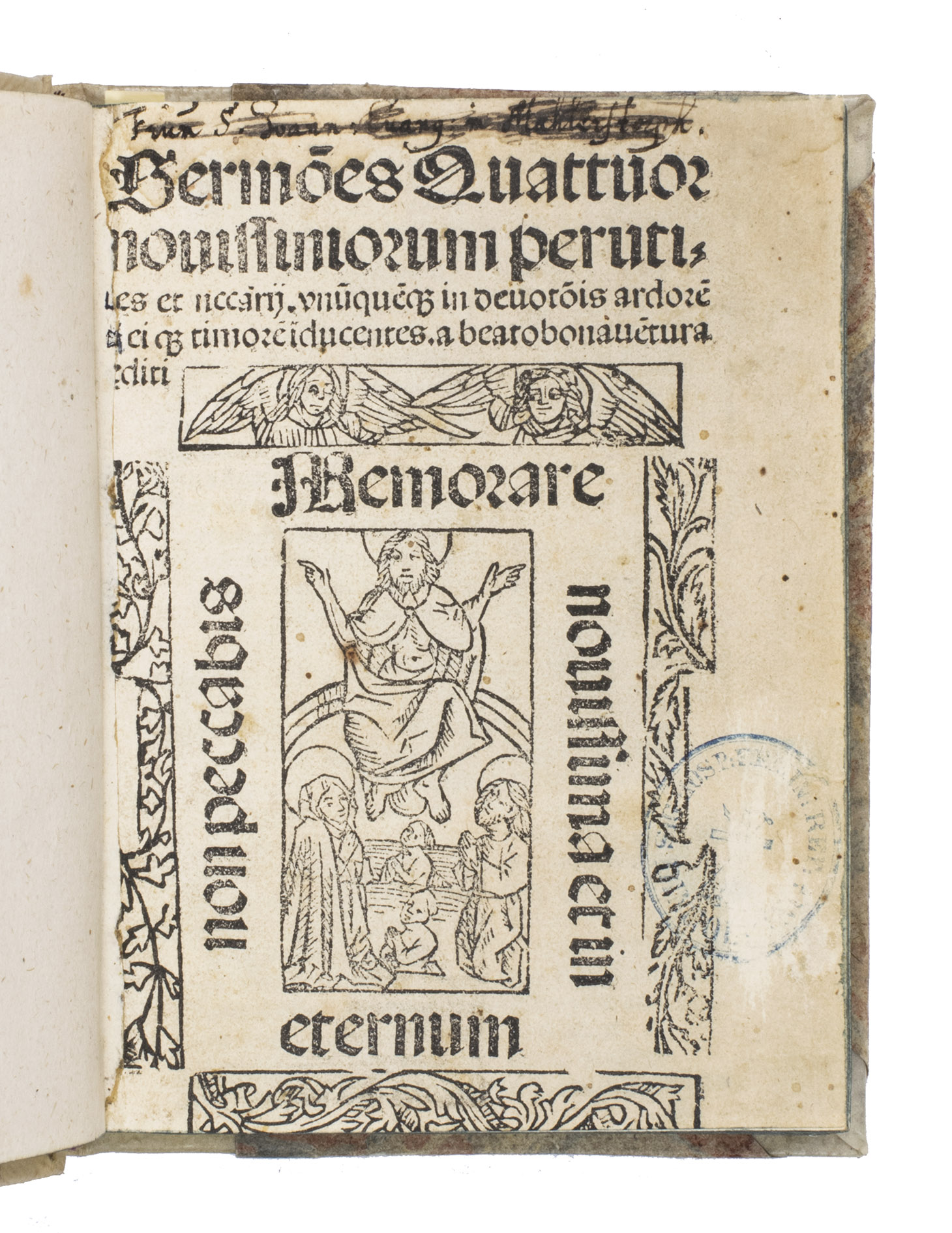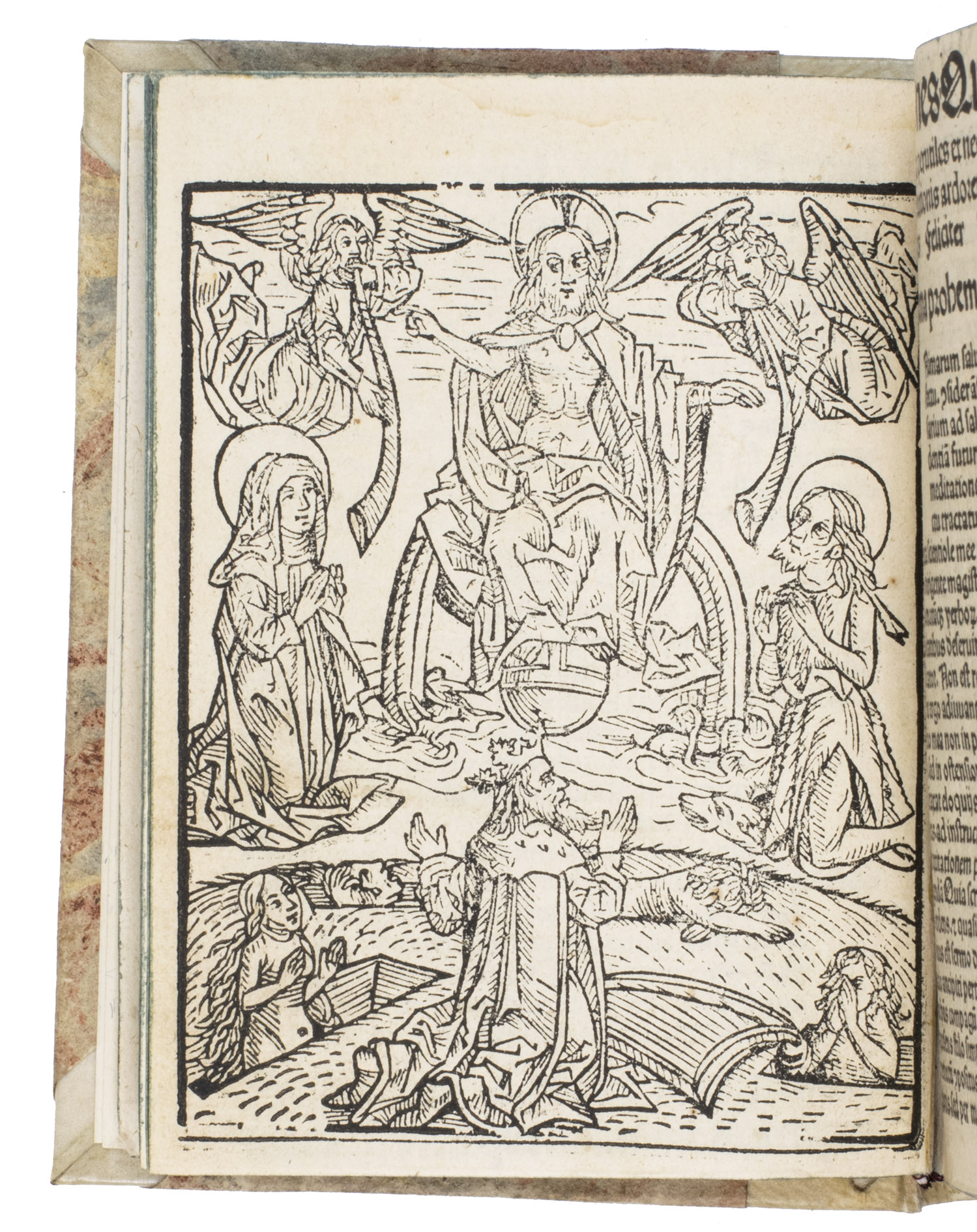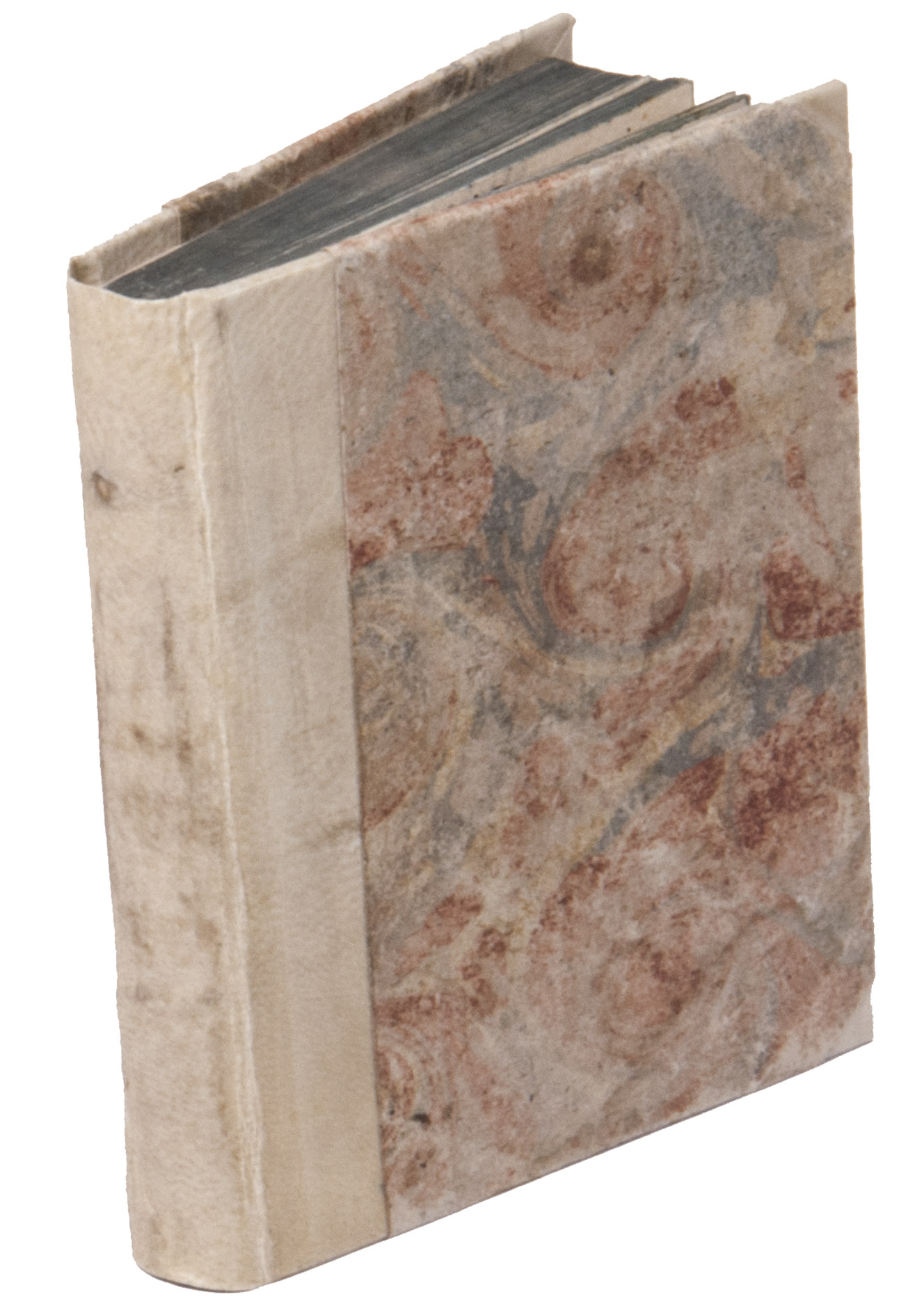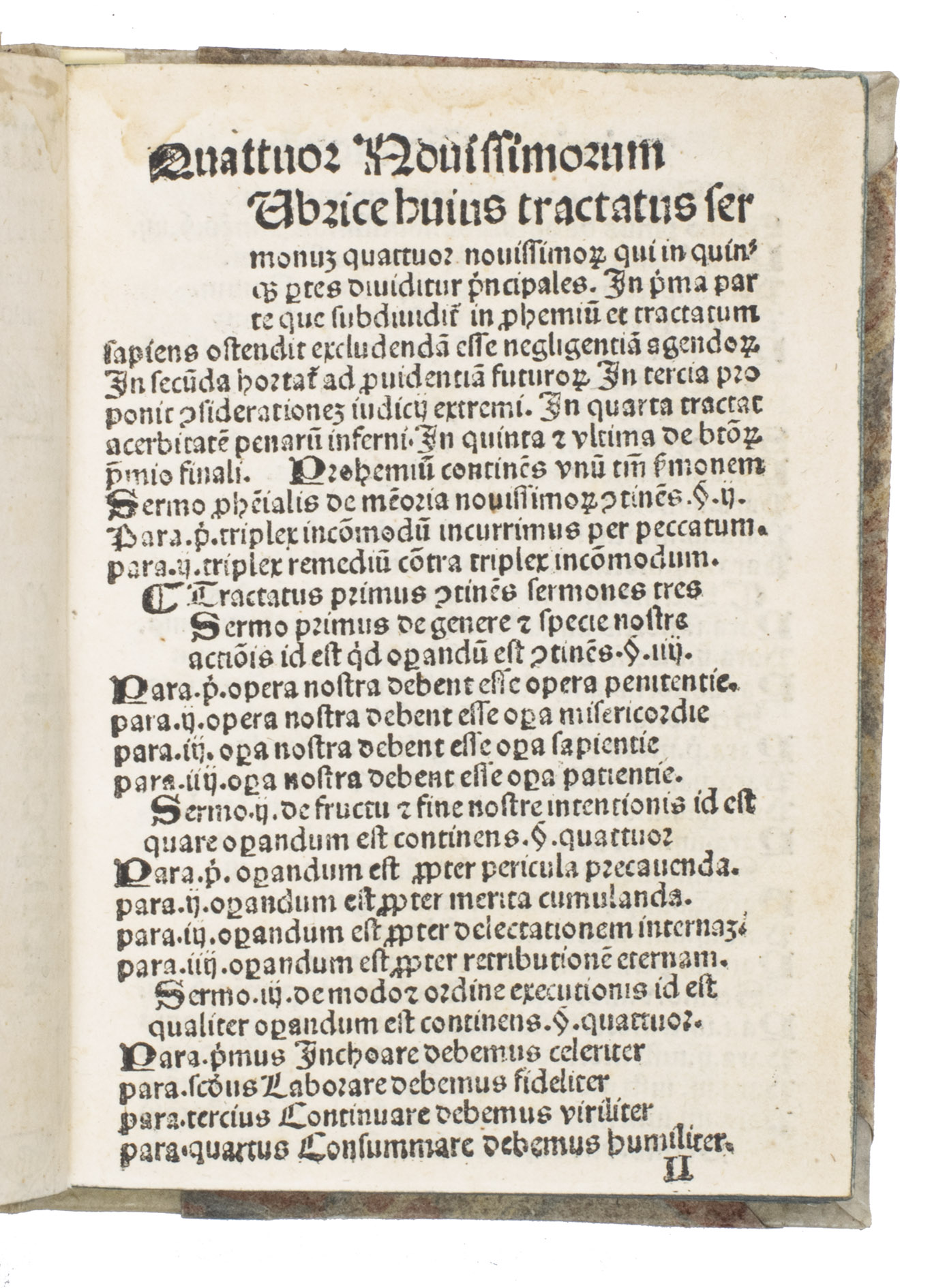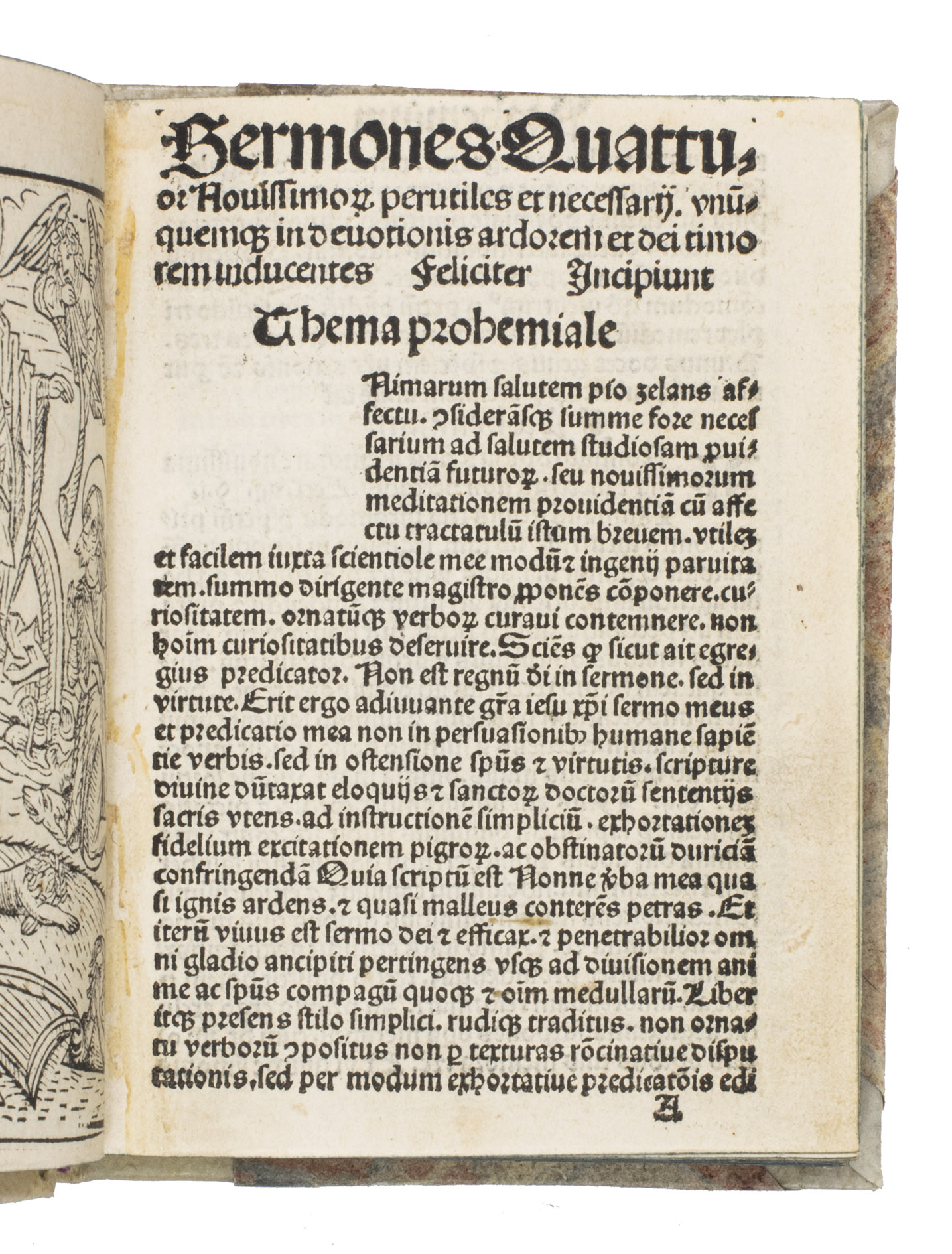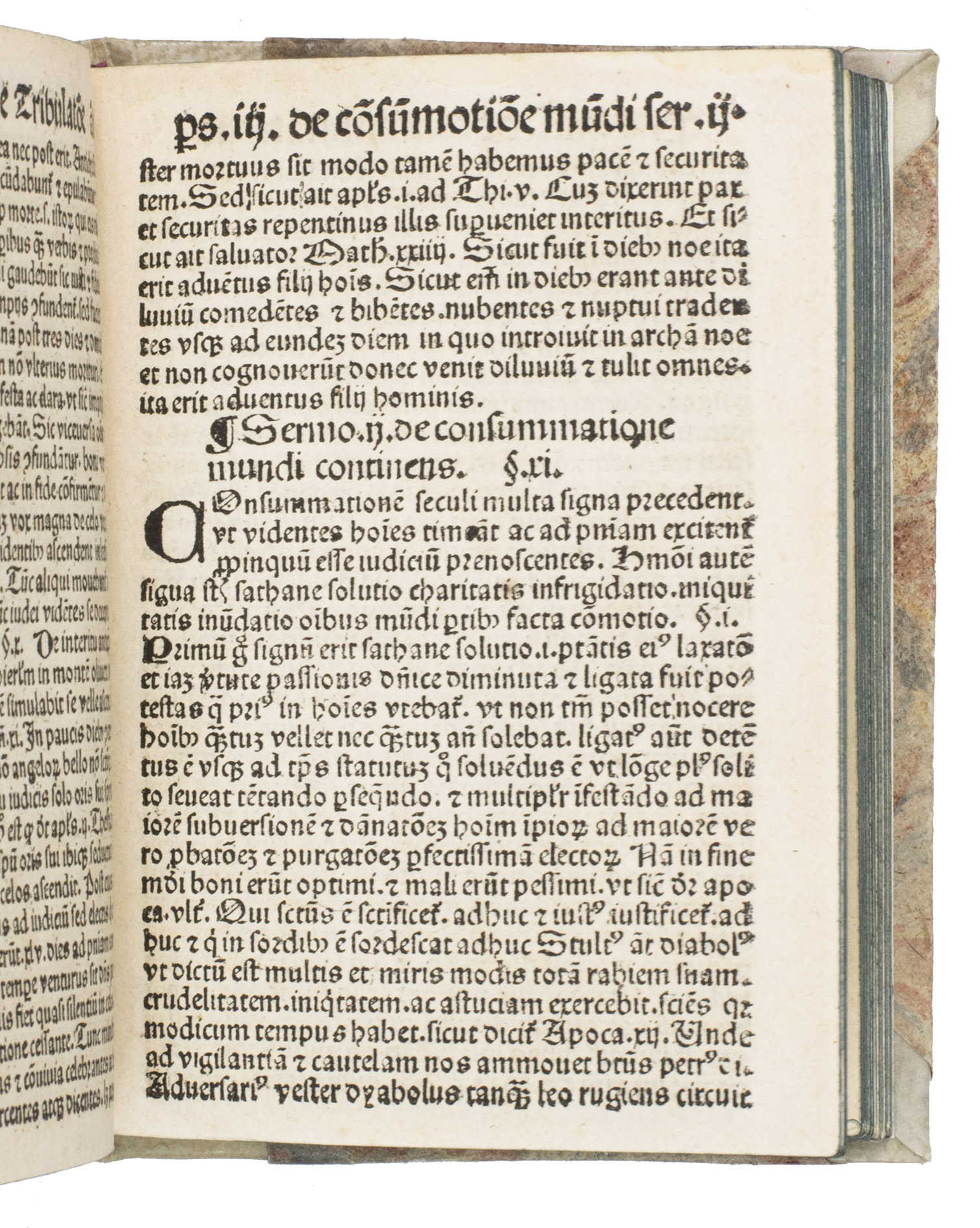BONAVENTURA (pseudo); [attributed to Durand of CHAMPAGNE].
Sermo[n]es quattuor novissimorum perutiles et nec[ess]arij. unu[m]que[m]q[ue] in devot[i]o[n]is ardore[m] dei q[uam] timore[m] [in]ducentes.
[Colophon: Cologne, Cornelius von Zierickzee, ca. 1502]. Small 8vo (ca. 12.5 x 10 cm). With a small woodcut illustration surrounded by woodcut border decorations on the title-page and two full-page woodcut illustrations in the text. The text is set in Gothic type. Later half vellum with marbled paper sides, blue edges. [2 blank], VII, [120] ll.
€ 6,500
First German edition of an early post-incunable with beautiful woodcut illustrations. The work contains 37 sermons, which are divided in five series arranged by subject matter. The first part considers human actions, while the remaining ones centre around the four Last Things (novissima), namely death, judgement, heaven, and hell. The final section reworks ideas of Saint Anselm (1033-1109) about the salvation of the soul. The woodcut illustrations aptly show Christ at the Last Judgement. The work is quite rare, as we have not been able to find the present edition in any sales records of the past hundred years.
The present work was originally an anonymous treatise from the 14th century, called De consideratione novissimorum, but was later attributed to Saint Bonaventure (1221-1274). Although the work does contain a few of Bonaventure's favourite phrases, Constant and Zahora think it may instead have been written by Durand of Champagne (late 13th- to early 14th century), the most significant Franciscan preacher at the French royal court at the time. The treatise is part of a way of thinking that considers remembering the Last Things to be essential to pursuing a moral life, as Ecclesiasticus 7:40 states that: "In all thy works remember thy last end, and thou shalt never sin".
Interest in the four Last Things expanded greatly after Gerard van Vliederhoven (c.1340- 1402), a key figure in the Devotio Moderna movement in Utrecht, composed the Cordiale quattuor novissimorum (c. 1380). Dozens of editions of this text, in both Latin and the vernacular, were printed between 1471 and 1505. It is exactly during this time that Durand's treatise, now republished as Bonaventure's sermons, also became popular. The work was first published with the present title and arrangement in Paris in 1482, and many editions followed. The present work is the 7th edition overall, but the first printed in Germany. There is a nearly identical edition, also printed by Cornelius van Zierickzee in the same year. The only difference between the two is a printing mistake on the title page ("eidti" instead of "editi"). The present work does not contain the mistake and thus is likely the second issue.
With later annotations on the second free flyleaf in two different hands ("Inc. XI J 19-20" and "Mauius (or Marius?) - Deigl 1800"), a crossed out annotation at the head of the title-page, and an oval blue library stamp near the foot of the title-page. The marbled paper on the boards is somewhat rubbed, the foot margin has been cut short, slightly affecting the title page and final leaf, the blank leaf after the introduction is lacking. Otherwise in good condition. BMC, German, p. 141; BSB-Ink, B-639; GW IV, Sp. 479a; Goff B947; Hain 3525; ISTC ib00947000 (12 copies); Proctor 1514; USTC 693462 (8 copies); VD16 B6579; WorldCat 162367876, 1068412909, 248319224, 1029604289, 734189726 (10 copies); cf. Constant, J. Mews and T. Zahora, Remembering last things and regulating behavior in the early fourteenth century: from the "De consideratione novissimorum" to "The speculum morale". In: Speculum, vol. 90 (4), October 2015, pp. 960-994.
Related Subjects:
